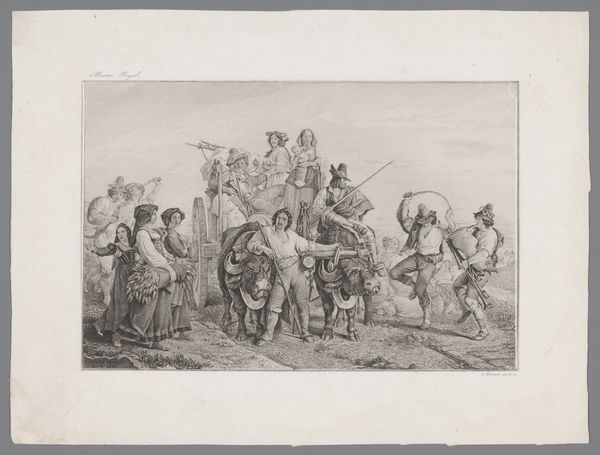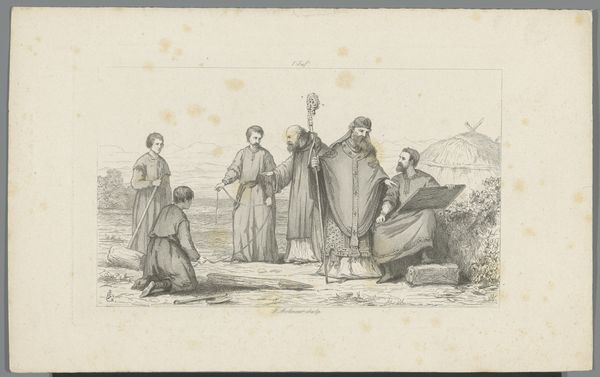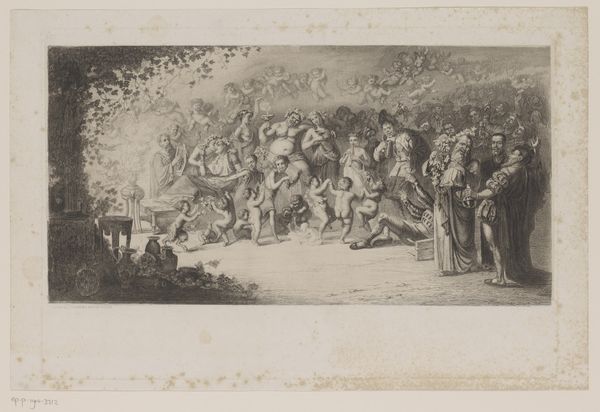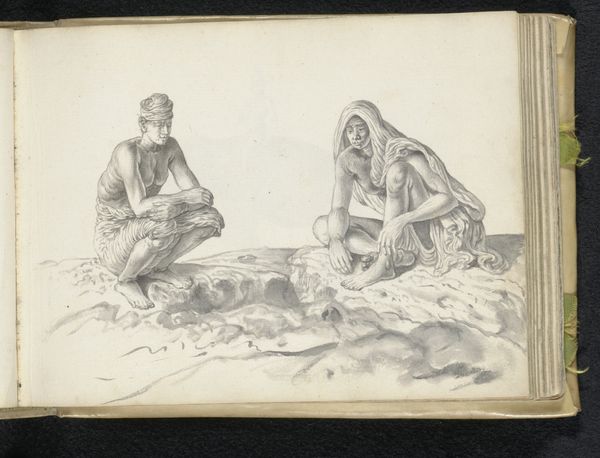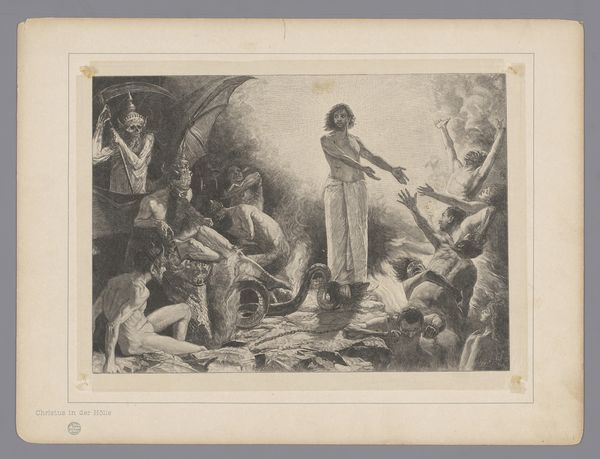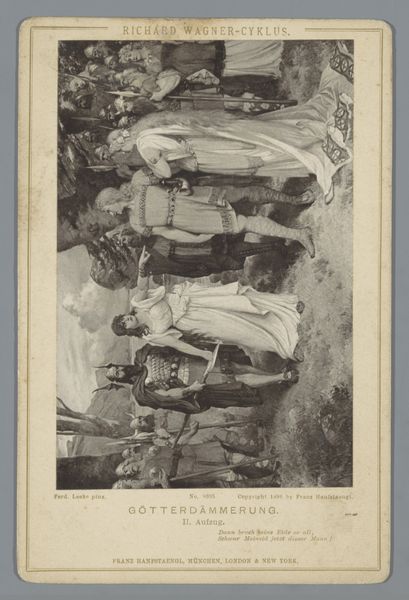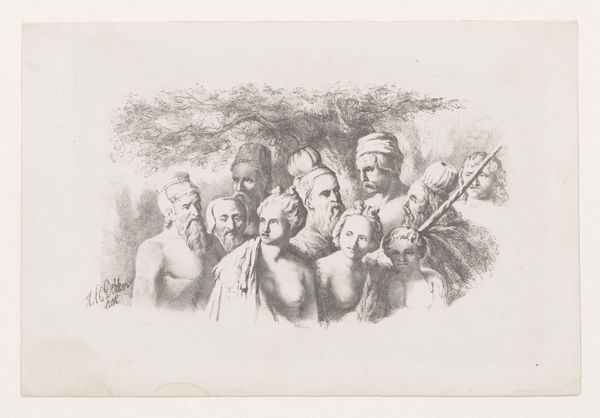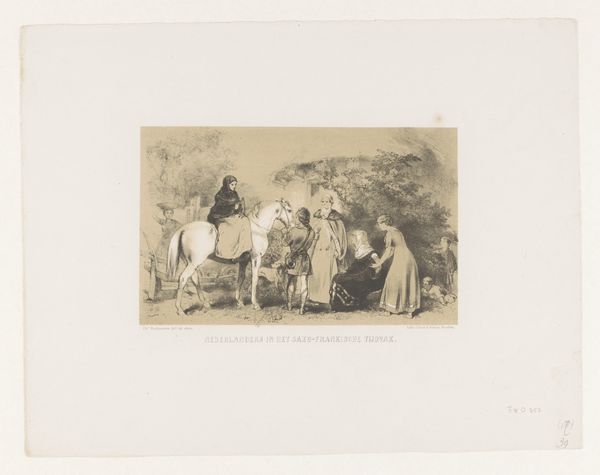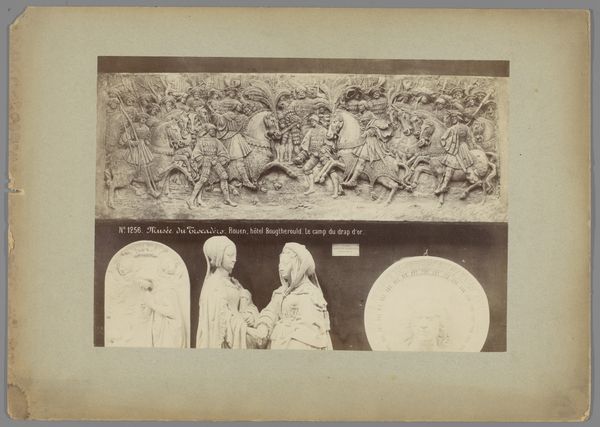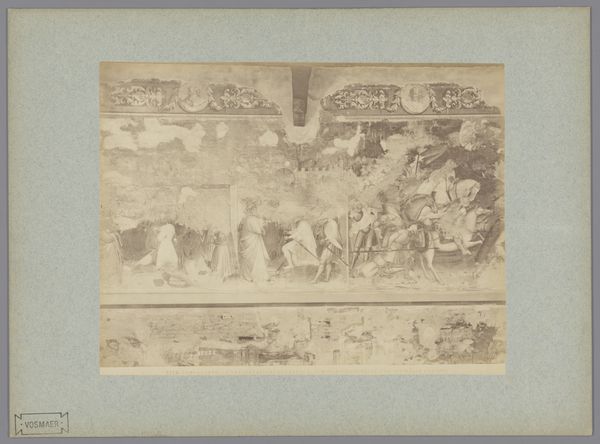
Fotomontage: tien maal hetzelfde model (Blok?) als Darius die afscheid neemt van zijn rijksgenoten (Arti, Pulchri Studio) c. 1890 - 1900
0:00
0:00
print, photography
#
portrait
# print
#
photography
#
coloured pencil
#
orientalism
#
genre-painting
Dimensions: height 60 mm, width 75 mm
Copyright: Rijks Museum: Open Domain
Curator: This is a rather curious photomontage created circa 1890-1900 by Machiel Hendricus Laddé, currently held in the Rijksmuseum. The long title translates to "Photomontage: ten times the same model (Blok?) as Darius taking leave of his countrymen." What strikes you initially about this unusual image? Editor: The first thing that jumps out is the sepia tone and the theatricality of the composition. It’s like a staged drama caught in a fleeting moment, though with a kind of unsettling repetition across the figures. It almost feels like a historical tableau vivant being filtered through an uncanny, early photographic process. Curator: Exactly. The layering, the multiplication of figures... it evokes a dreamlike or perhaps even a mythical realm, doesn’t it? Notice how Laddé utilizes photography, traditionally associated with realism, to create something so stylized and performative. The orientalist themes hint at a fascination with representing the 'exotic' other, drawing from classical narratives like Darius's story, but through a colonial lens. Editor: Right, it definitely evokes the orientalist gaze, transforming Darius's story into a stage for colonial fantasies, while the figure Blok takes the central role. We see echoes of power dynamics, not just in the representation of Darius but also in how the artist uses early photographic technology to reinforce these power structures by depicting him with various companions. And the act of reproducing Blok further emphasizes how Laddé creates an exoticized scene based on Western interpretation. Curator: It also leads one to wonder about Laddé's intentions with these photographic techniques, and the repeating figure. Was it commentary, or perhaps simply artistic experimentation for that period, using techniques of multiplication to play on ideas about power, identity and how history is constructed through images? What underlying messages do we pick up in the continuous image? Editor: Perhaps, there is an attempt to create a modern vision, using current tech with older artistic representations, and thus, questioning imperial grandiosity? The photograph may provide us some historical evidence but simultaneously also show that photography cannot give us definitive records, and therefore an invitation to the possibilities that lie between them. I like how that resonates to this day, showing different views on historical events based on background, gender, and race, still offering some kind of an 'out'. Curator: I think it's a valid take. This artwork demonstrates the importance of looking beyond the surface of photographs, in recognizing how easily it is to read cultural memory, stereotypes, or even manipulation into those images. We have travelled quite some distance in deciphering visual storytelling. Editor: Indeed. I'm taking away how historical artworks continue sparking dialogue on topics that continue being a social mirror, allowing us a broader perspective on power, identity, and social issues.
Comments
No comments
Be the first to comment and join the conversation on the ultimate creative platform.

